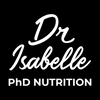PLANT PROTEINS IN THE SPOTLIGHT

VEGETABLE PROTEINS IN THE SPOTLIGHT
Collaboration with St-Méthode Bakery
Whether for environmental or health reasons, many have decided to reduce their consumption of animal protein. Eating less meat is even a New Year's resolution. Meatless Mondays are more popular than ever and many consumers are even giving up animal protein several days a week. Vegetable proteins, unlike animal proteins, do not have all the essential amino acids (the basic constituents of proteins) so that we must, during the day, supplement our diet with other complementary proteins. This is why cereals are traditionally combined with legumes (couscous and chickpeas or black beans and corn or even legumes with nuts (lentil salad with walnuts, chickpea curry with almonds).
As a nutritionist, I not only love the nutritional value of vegetable proteins but also their taste! In my practice, I strongly encourage my clients to integrate them more into their menu. Low in saturated fat, often high in fibre, vitamins and minerals, vegetable proteins are very nutritious. However, it takes more than a few chickpeas in a salad to meet its protein needs. The recommended serving of legumes ranges from 180 ml (¾ cup) to 250 ml (1 cup) per meal. As for tofu, it takes 100 g for a balanced meal. Nuts and seeds (especially hemp) are also good sources of protein, but you have to eat a good amount of them to get enough protein. It is therefore better to combine them with legumes (lentil salad with walnuts, tofu in a hemp crust, etc.). Want to make more room for vegetable proteins Try silken tofu in your smoothie in the morning, replace ground meat with crumbled tofu in your chili or spaghetti sauce and add lentils or red beans to your soups. It's a good start, no doubt that over the weeks, you will want to consume even more!!
Vegetable proteins:
* Are low in saturated fat, often high in fibre, vitamins and minerals
* Good substitute for meat
* Are versatile and lend themselves to several culinary preparations
You want to know more about the range of products at Boulangerie St-Méthode?CLICK HERE
@Denise : Je crois que la protéine végétale que vous cherchez est l’edamame. C’est une fève de soya de couleur verte.
Quelle est .a meilleure proteine vegetale ( 1ere. Dont vouz avez parle le 11 sept a lcn (ca semblait vert)
@Claude: Non, il n’y a pas d’inconvénients. La valeur quotidienne est basée sur 25 g et c’est un minimum à consommer. Les experts en microbiote sont du même avis, nous devrions tous en consommer jusqu’à 50 g par jour.
J’ai acheté des protéines végétale texturée . Pour 100g il y a 18 g de fibres [ 72 % de l’apport quotidien] . Est-ce que de manger plus de 100% de l’apport quotidien en fibre , peut nuire au intestins ? ou autres ?
Merci :) ♥
@Gaétane L’Idéal est de mélanger les protéines végétales afin d’avoir des protéines complètes. Par exemple, un repas pourrait contenir des pois chiches, des noix et du tofu. Les protéines végétales sont disponibles dans la majorité des épiceries.











10 comments